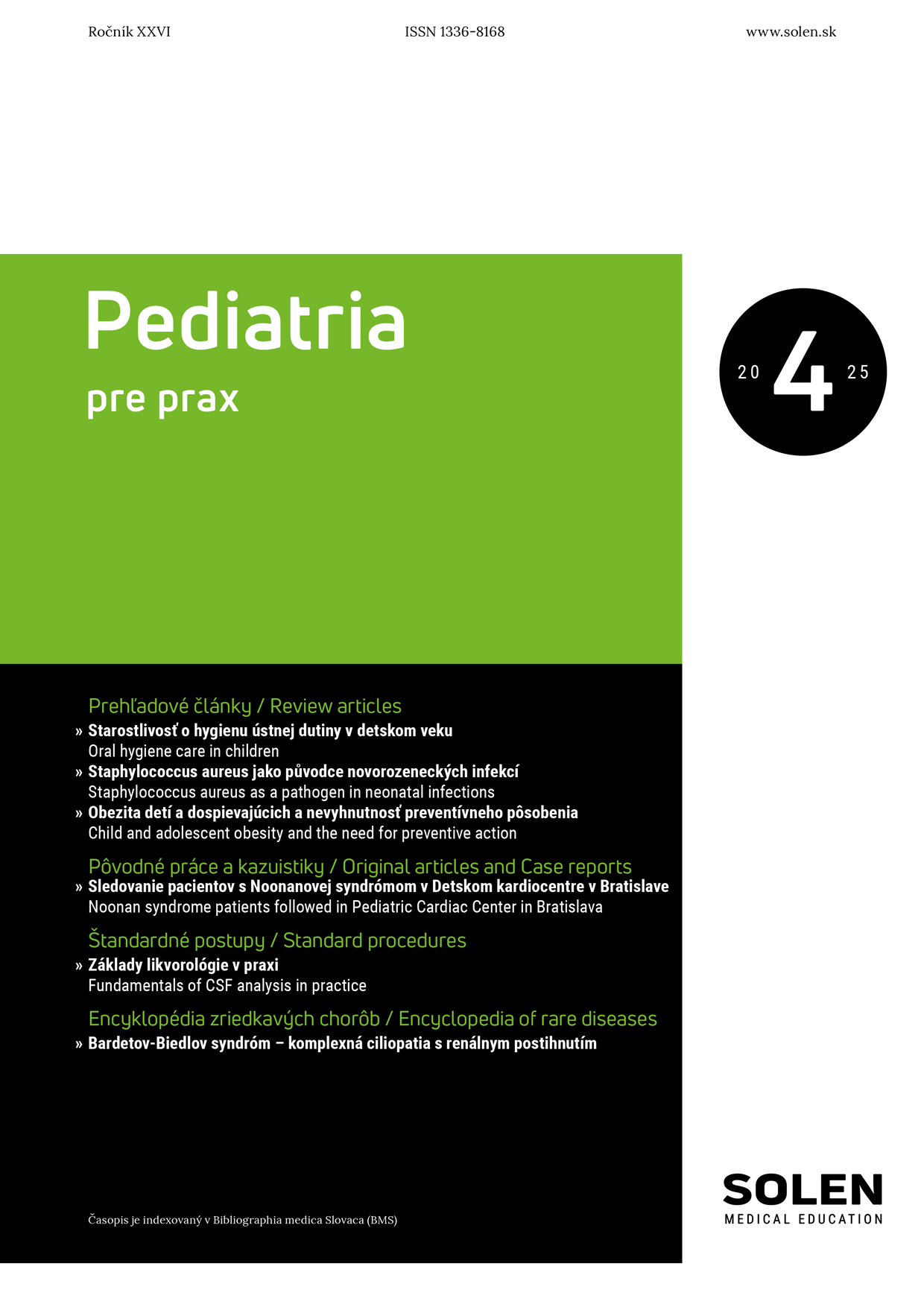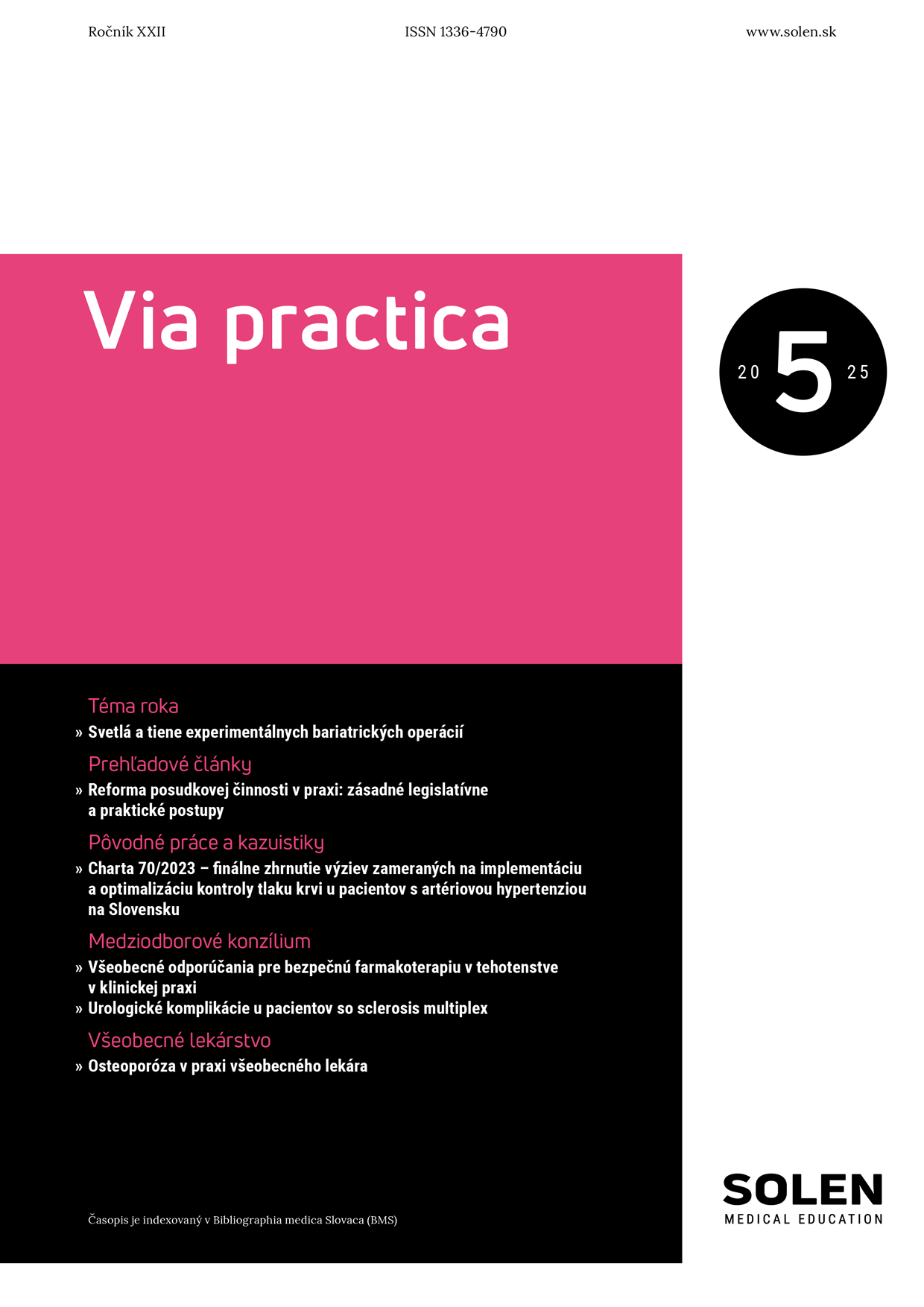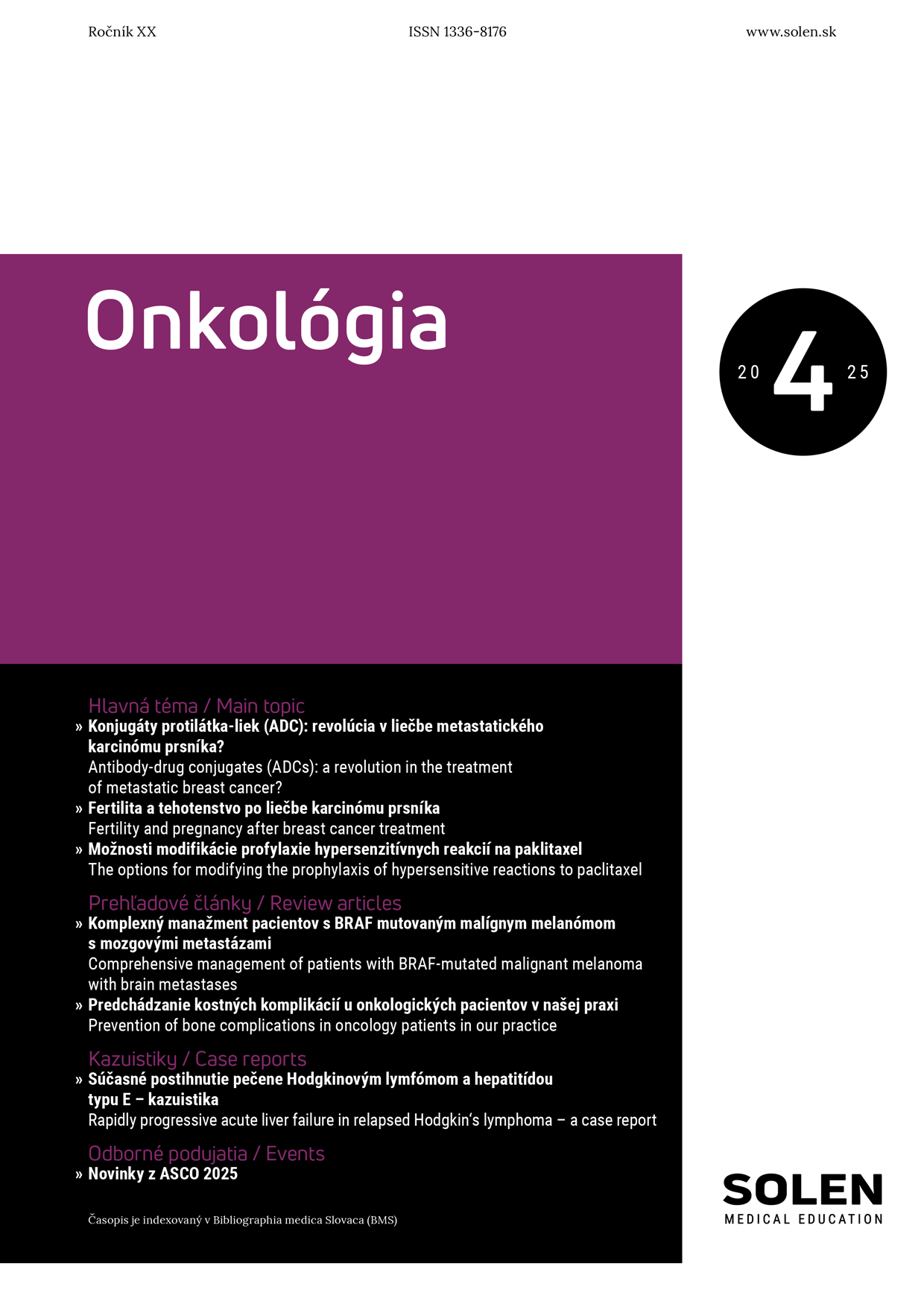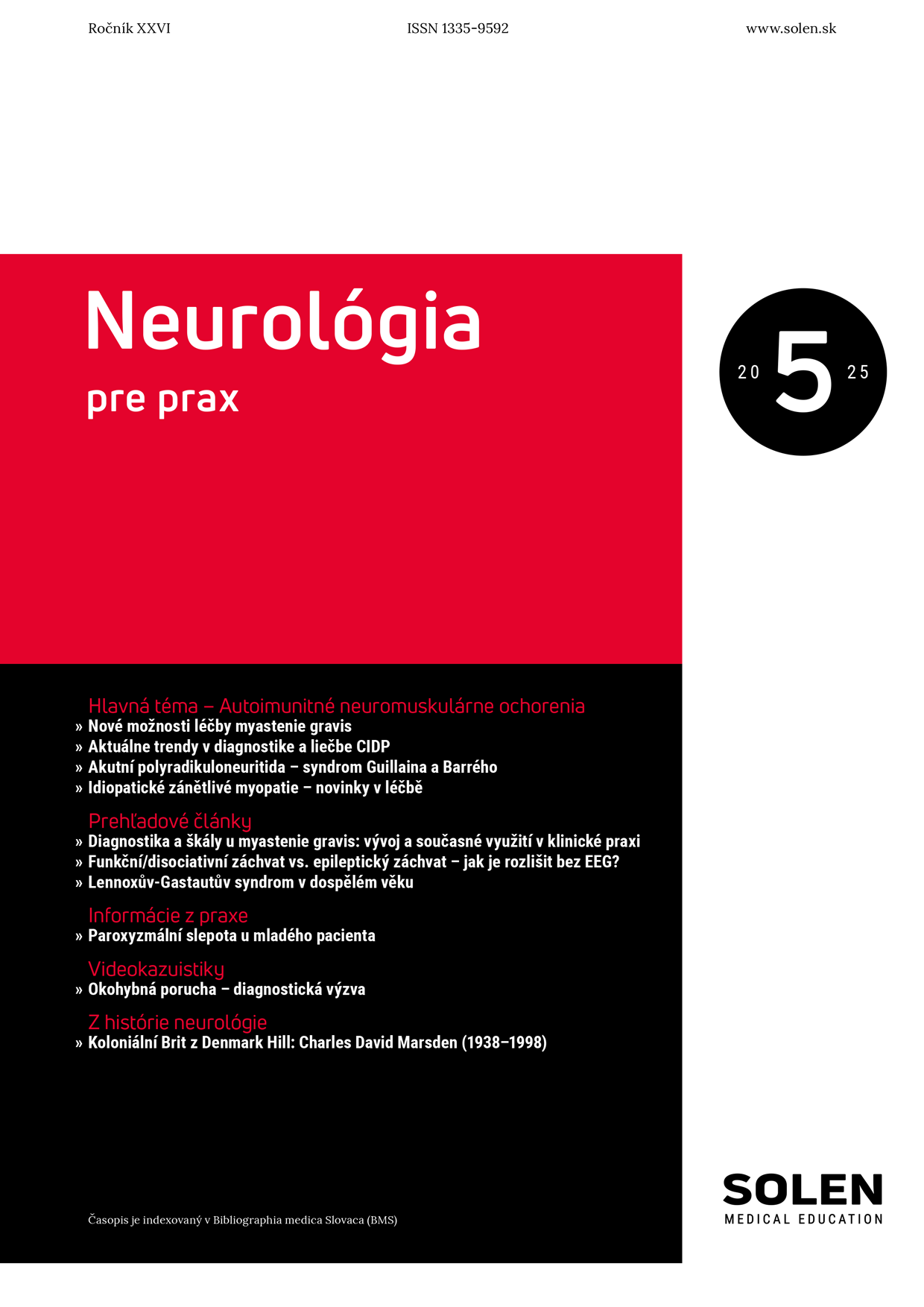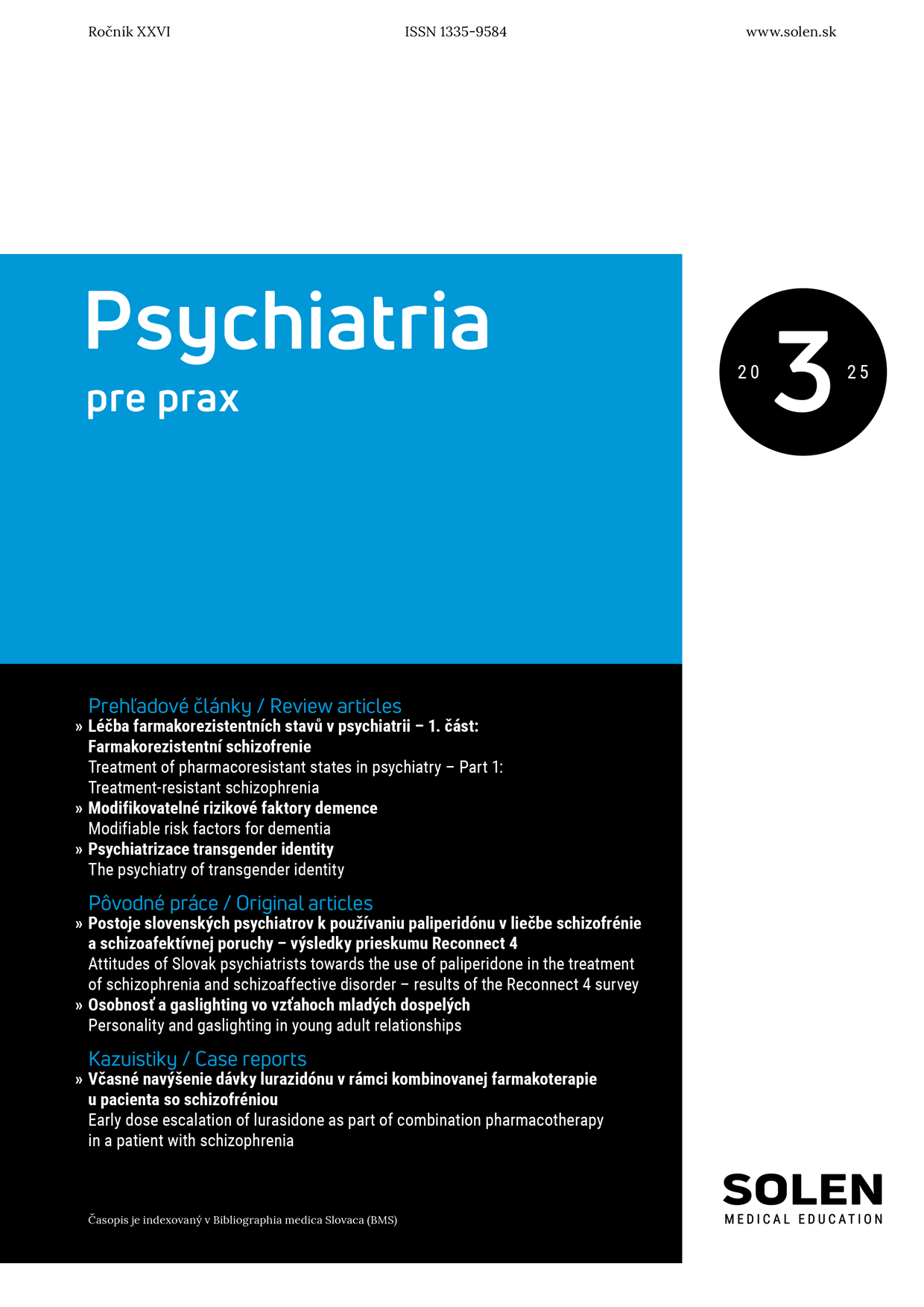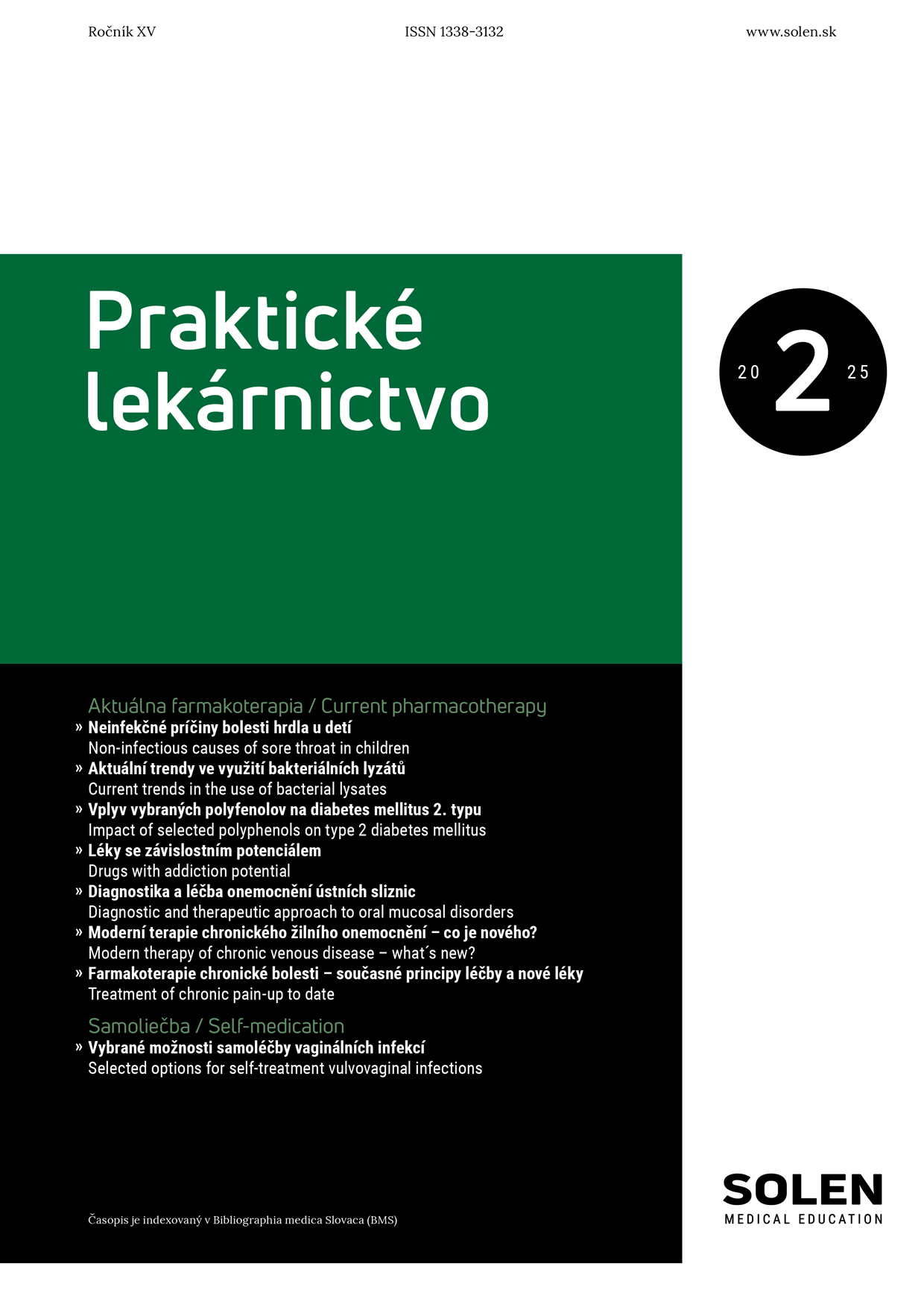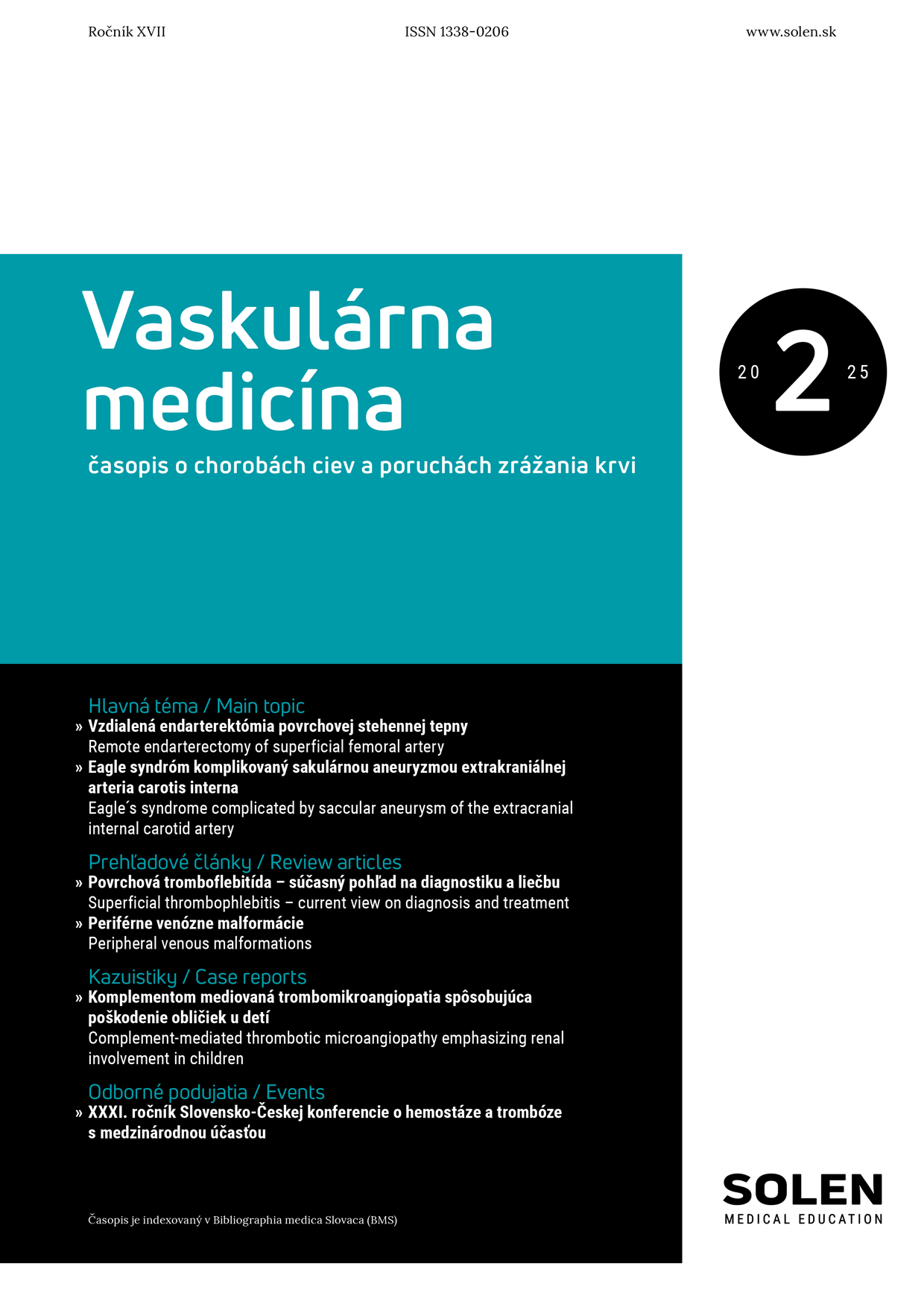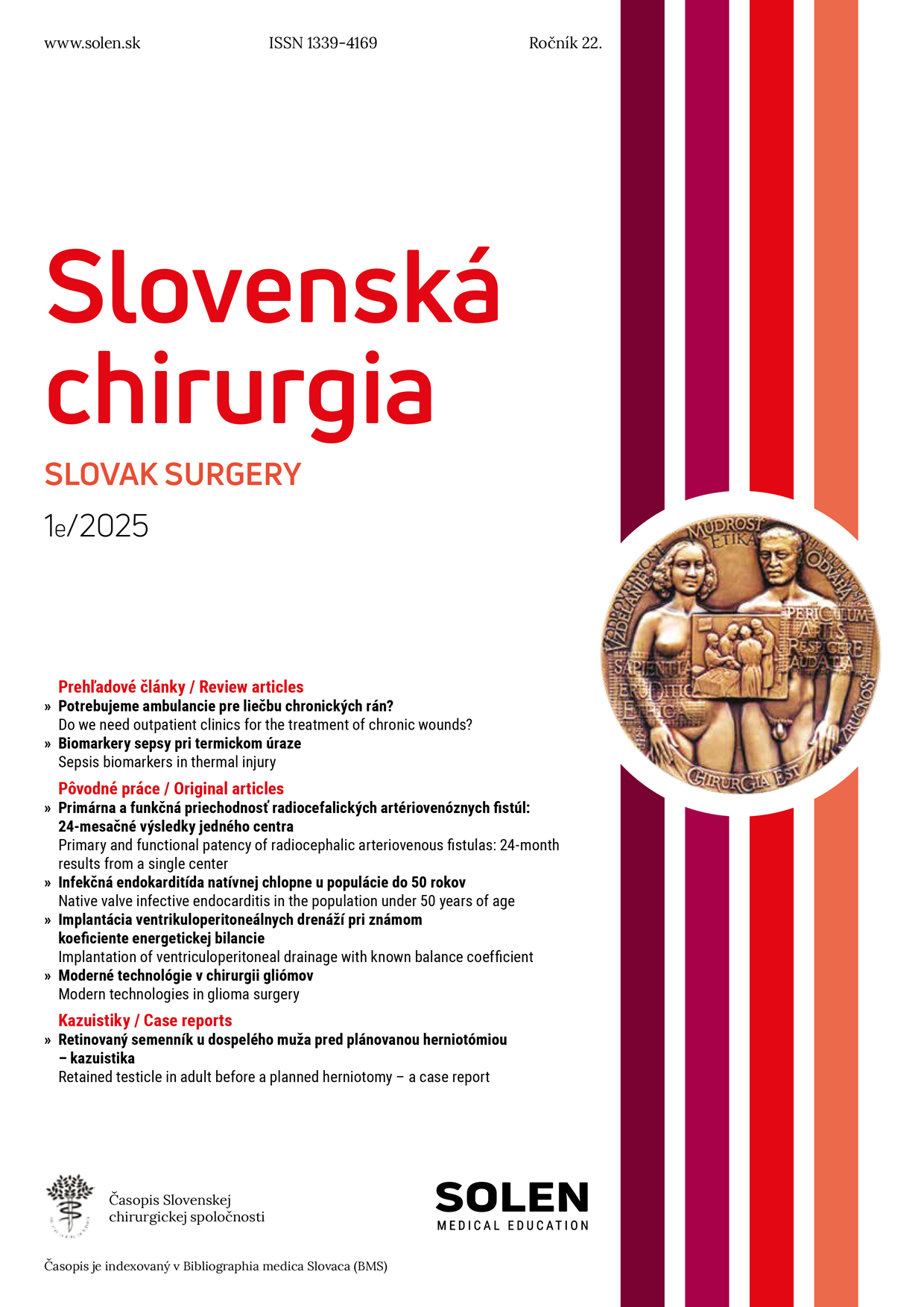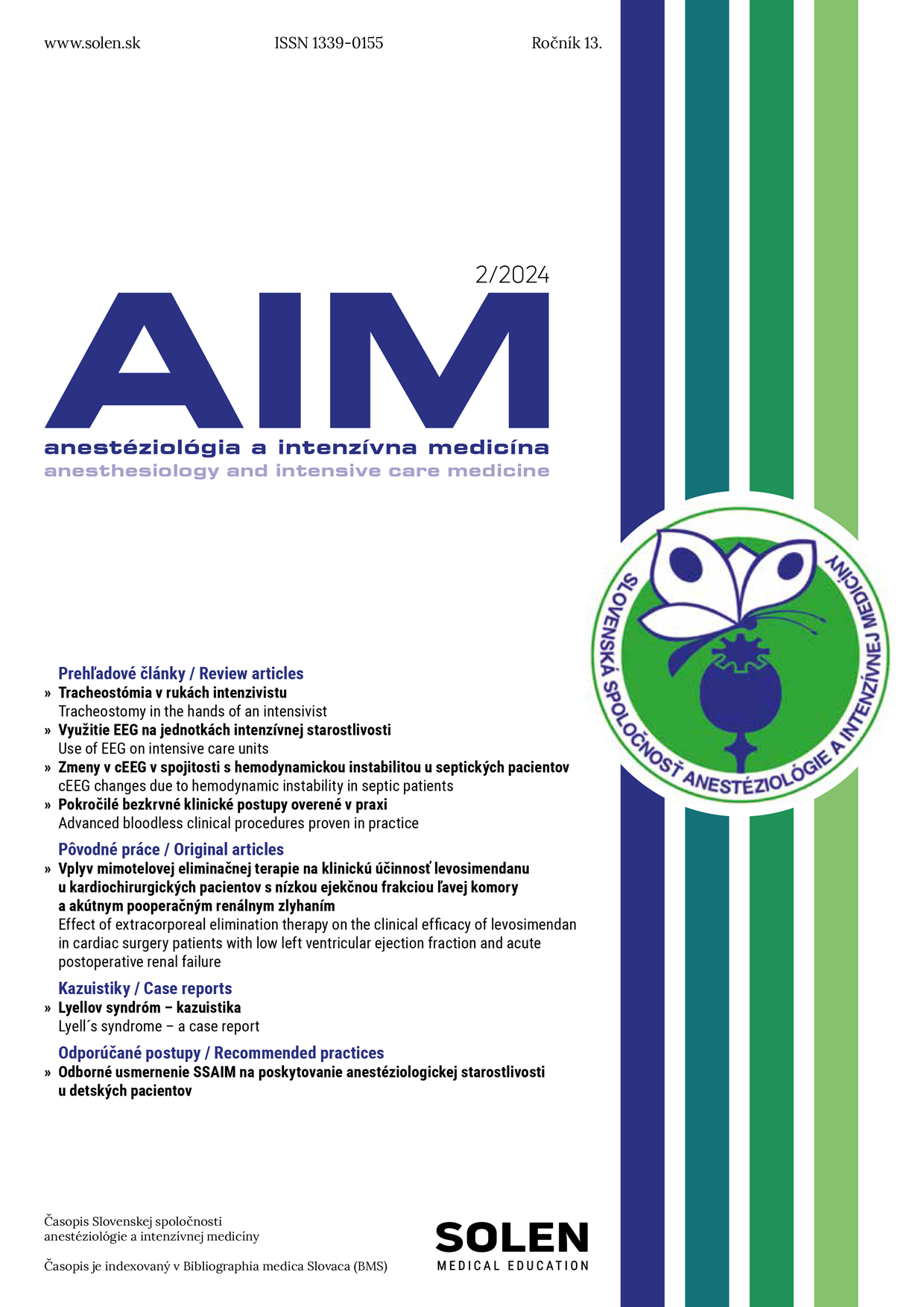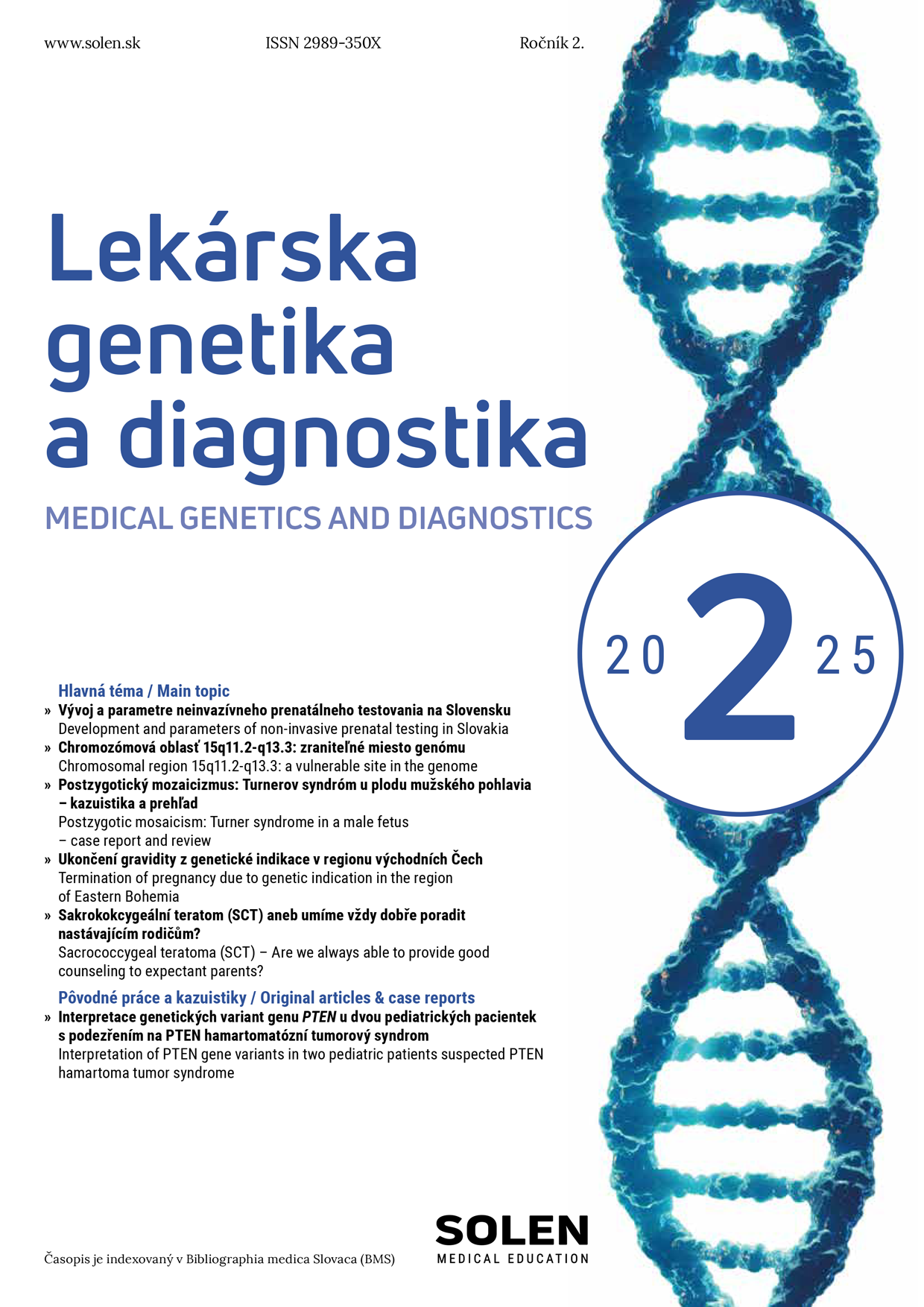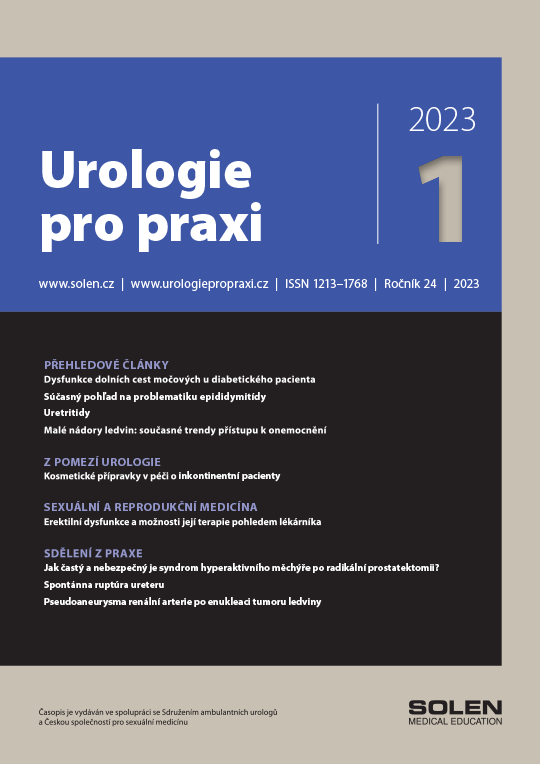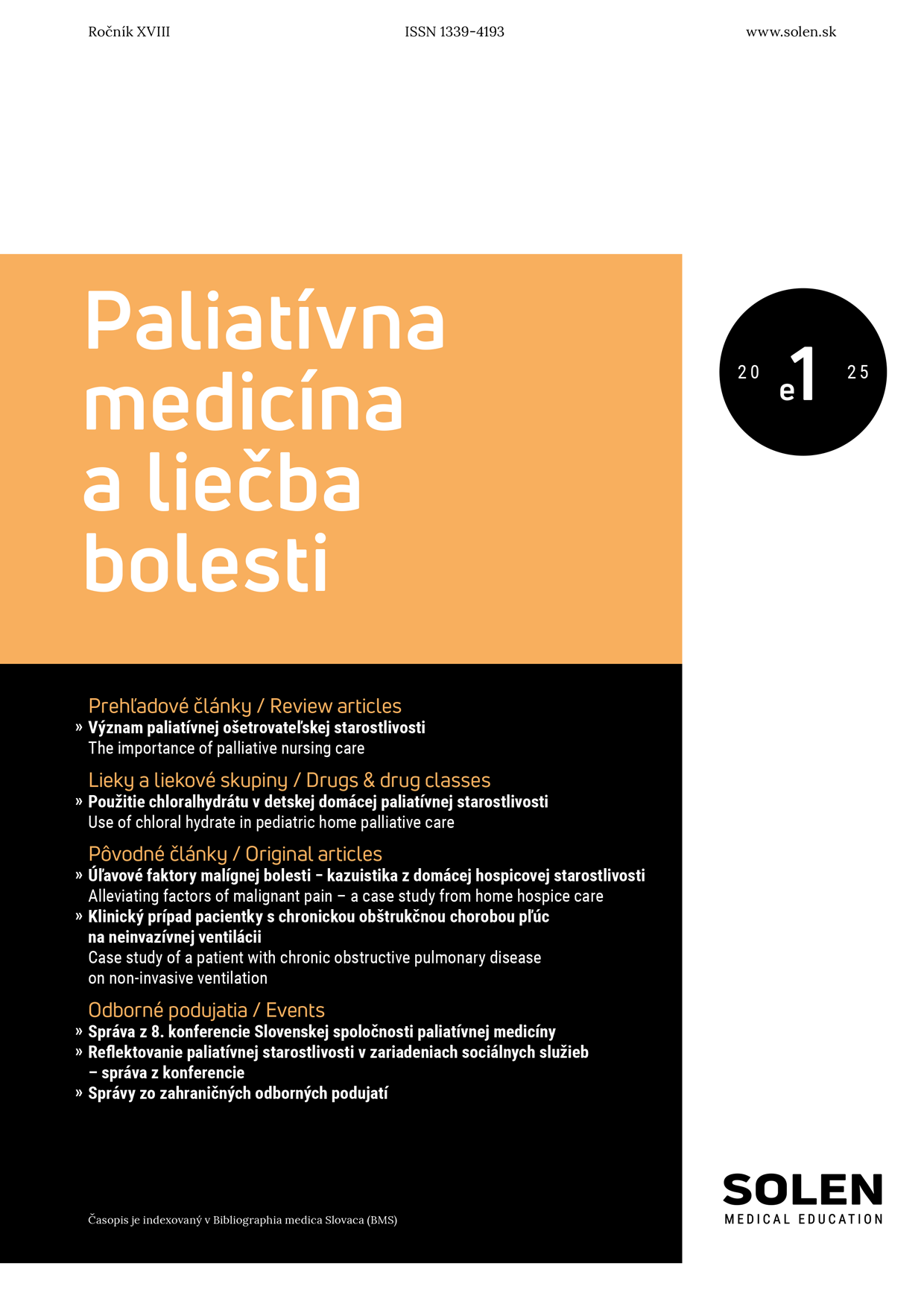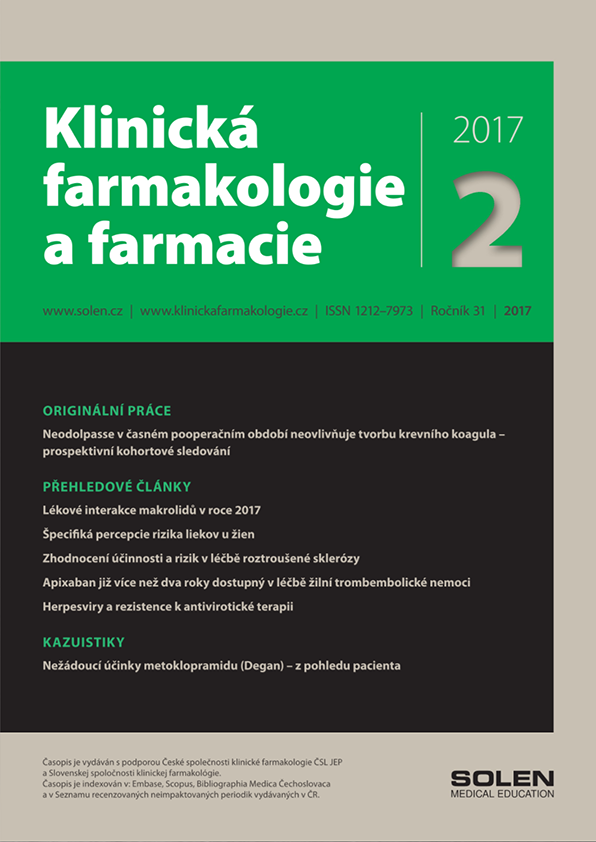Manuscript must be submitted in electronic format via email to: malova@solen.sk and redakcia@solen.sk. Submission of a printed manuscript is not required.
The Editorial team reserves the right to make minor stylistic adjustments to the text without consulting the author, who will be informed during the proofreading process. The editorial team also reserves the right to reject texts that do not align with the journal's concept or have not been approved through the peer review process. If necessary, the author's consent will be sought to shorten the manuscript. In case of any formal deficiencies, the manuscript will be returned to the author for revision.
The editors team reserve the right to self-manage the inclusion of unsolicited manuscripts that have passed the peer review process.
Given the journal's practical focus, manuscripts should be written in a clear manner, emphasizing the practical application of the provided information in clinical practice.
Authors and co-authors are required to familiarize themselves with the rules of publication ethics, available in full on the journal's website. When submitting an article for publication, the main author must send a written declaration to the editorial office stating that the entire authorial collective is aware of the publication ethics rules and that there are no impediments to publishing the article.
Legal relationships between the publisher and the author are governed by the provisions of the Copyright Act.
1. Concise title of the work (in Slovak and English), names and surnames of all authors, including titles and affiliations. The address of the main author, along with their phone number and email address, should be provided, and a portrait photograph of the main author (150 dpi) is required. Contact information for the main author should be included in the article.
2. Abstract and keywords: see formal requirements for the article.
3. English translation of the title, abstract, and keywords.
4. Main text: Length should adhere to the formal requirements for the article.
- If you include images in document, please submit their original files separately with accurate captions. The minimum resolution for submitted imaged is 300 dpi. When sending photo documentation by mail, please send only high-quality originals. All figures should be labeled with the corresponding numbers as cited in the text.
- In the case of image documentation previously published in another publication, it is necessary to provide the original source and obtain written consent from the copyright holder.
5. List of References: In-text citations should be presented in the format “author and year” in parentheses, e.g., (Rektor, 2006) or (Rektor and Kuba, 2006). If there are more than three authors, use “et al.” after the first author's name, e.g., (Smrčka et al., 2007). The list of references should be arranged alphabetically and numbered. The specific number of citations and the citation format should adhere to the formal requirements for the articles and the formatting guidelines.
1. Review Articles/Main Topic Articles/From the Frontiers of Neurology/Pharmacotherapy Articles
- 2000 words (excluding abstracts, images, graphs, tables, schemes, legends, and references)
- Abstract: 100 words, 5-10 keywords
- Number of citations: 25-30
- Images, tables, graphs, schemes: 8
2. Information from practice (Case Reports, Original Articles)
- 1800 words (excluding abstracts, images, graphs, tables, schemes, legends, and references)
- Abstract: 100 words, 4-8 keywords
- Number of citations: 15-20
- Images, tables, graphs, schemes: 8
The text should be divided into the following sections: introduction, materials and methods/ patient cohort and methods, results, discussion, and conclusion.
3. Video Case Reports
- Length of the text: 1500 words (excluding abstracts, figures, graphs, tables, schemes, legends, and references)
- Abstract: 100 words, 4-8 keywords
- Number of citations: 10
- Figures, tables, graphs, schemes: 8
The article along with an optional video recording will be published on the website. The author must obtain informed consent from the patient.
4. Neuroimaging Case Reports
- 250 words (excluding abstracts, figures, graphs, tables, schemes, legends, and references)
- No abstract, 4-8 keywords
- Number of citations: 2
- Images: 3
5. Controversies
- Two separate contributions from two different authors – each with a length of 500 words (excluding images, graphs, tables, diagrams, legends, and references)
- Number of citations for each contribution: 5
- Images, tables, graphs, diagrams: 2 for each contribution
6. From the History of Neurology
- 800 words (excluding abstracts, images, graphs, tables, diagrams, legends, and references)
- Abstract: 100 words, 4-8 keywords
- Number of citations: 15
- Images, tables, graphs, diagrams: 4
7. Information/Comments/News
- 500 words
- Images, tables, graphs: 5
8. Laudations, Obituaries
- 500 words
- Images, photographs: 2
- Font: Times New Roman, size 12, line spacing 1.5,
- The total number of pages depending on the type of contribution.
- Divide the article into smaller and more readable sections, and use subheadings and simple divisions if necessary. For original articles and case reports, adhere to the required structure described in manuscript requirements.
- All abbreviations must be explained at their first use.
- Parenthesis should always be round ().
- Domesticated foreign expressions should be written either in accordance with the rules of Slovak orthography or in their original Latin form.
- In the text, clearly indicate references to all graphical representations, tables, or charts, which should be created using MS Word or MS Excel.
- For all types of contributions (reviews, original articles, and case reports), please ensure that the text adheres to the general rules of formal Slovak language appropriate for professional publications. For instance, when describing a case in a case report, use complete sentences with full verbs, not in a bullet-point or list format as in laboratory test results. Texts intended for review must be grammatically and stylistically correct.
References should follow the format “author and year” in round brackets, e.g. (Rektor, 2006). In the case of two authors, use “author and author, year,” e.g., (Rektor et Kuba, 2006). It there are more than three authors, use “author et al.,” e.g., (Smrčka et al., 2007)
List the bibliography at the end of the article in alphabetical order and number it. In the bibliography, list up to three authors.
Example of citation a journal article: in AMA format (American Medical Association)
- Rektorova I, Klobusiakova P, Balazova Z, et al. Brain structure changes in nondemented seniors after six-month dance-exercise intervention. Acta Neurol Scand. 2020;141(1):90-97. doi:10.1111/ane.13181.
Example of citation a monograph according to the modified citation standard ČSN ISO 690:2011
- Ošlejšková H. Dětská neurologie. Olomouc: Solen. 2015; 248 s. ISBN 978-80-7471-124-4.
Example of citation a chapter in a book according to the modified citation standard ČSN ISO 690:2011
- Zumrová A. Opoždění psychického a motorického vývoje. Ošlejšková H. Dětská neurologie. Olomouc: Solen. 2015; str. 24-35. ISBN 978-80-7471-124-4.
Example of citation an electronic document
Example of citation a webpage:
- Ministerstvo zdravotnictví České republiky [online]. MZČR: ©2010 [cit. 16.5.2018]. Available at: https://www.mzcr.cz
- A portrait photograph of the author (if there are multiple co-authors, only the main author, or the author whose contact will be provided at the end of the article).
- A statement declaring that the article has not been published or offered for publication in any other journal.
- A statement confirming that the author and co-authors have familiarized themselves with the publication ethics guidelines (available in full on the journal's website) and that there are no obstacles to the publication of the article.
- A declaration of any potential conflicts of interest by the author.


